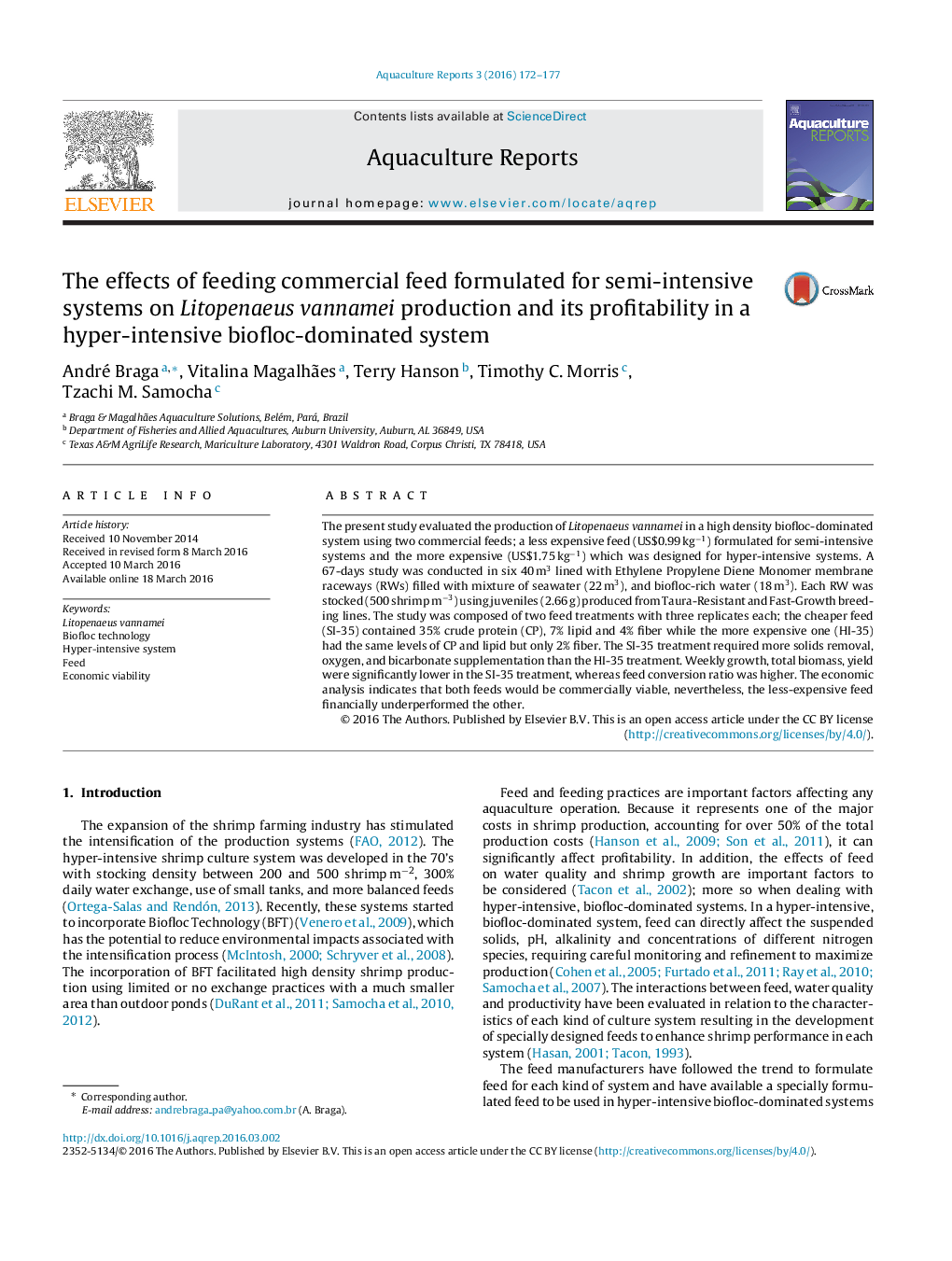| کد مقاله | کد نشریه | سال انتشار | مقاله انگلیسی | نسخه تمام متن |
|---|---|---|---|---|
| 4438014 | 1620277 | 2016 | 6 صفحه PDF | دانلود رایگان |

• Turbidity, total and volatile suspended solids were higher in the treatment with feed designed for semi-intensive system, whereas alkalinity was lower.
• Semi-intensive feed treatment required more solids removal, oxygen and bicarbonate supplementation.
• Weekly growth, yield and biomass were lower in semi-intensive feed treatment, whereas FCR was higher.
• The feed designed for semi-intensive systems (low-cost feed) financially underperformed the feed formulated for hyper-intensive (more-expensive feed).
The present study evaluated the production of Litopenaeus vannamei in a high density biofloc-dominated system using two commercial feeds; a less expensive feed (US$0.99 kg−1) formulated for semi-intensive systems and the more expensive (US$1.75 kg−1) which was designed for hyper-intensive systems. A 67-days study was conducted in six 40 m3 lined with Ethylene Propylene Diene Monomer membrane raceways (RWs) filled with mixture of seawater (22 m3), and biofloc-rich water (18 m3). Each RW was stocked (500 shrimp m−3) using juveniles (2.66 g) produced from Taura-Resistant and Fast-Growth breeding lines. The study was composed of two feed treatments with three replicates each; the cheaper feed (SI-35) contained 35% crude protein (CP), 7% lipid and 4% fiber while the more expensive one (HI-35) had the same levels of CP and lipid but only 2% fiber. The SI-35 treatment required more solids removal, oxygen, and bicarbonate supplementation than the HI-35 treatment. Weekly growth, total biomass, yield were significantly lower in the SI-35 treatment, whereas feed conversion ratio was higher. The economic analysis indicates that both feeds would be commercially viable, nevertheless, the less-expensive feed financially underperformed the other.
Journal: Aquaculture Reports - Volume 3, May 2016, Pages 172–177